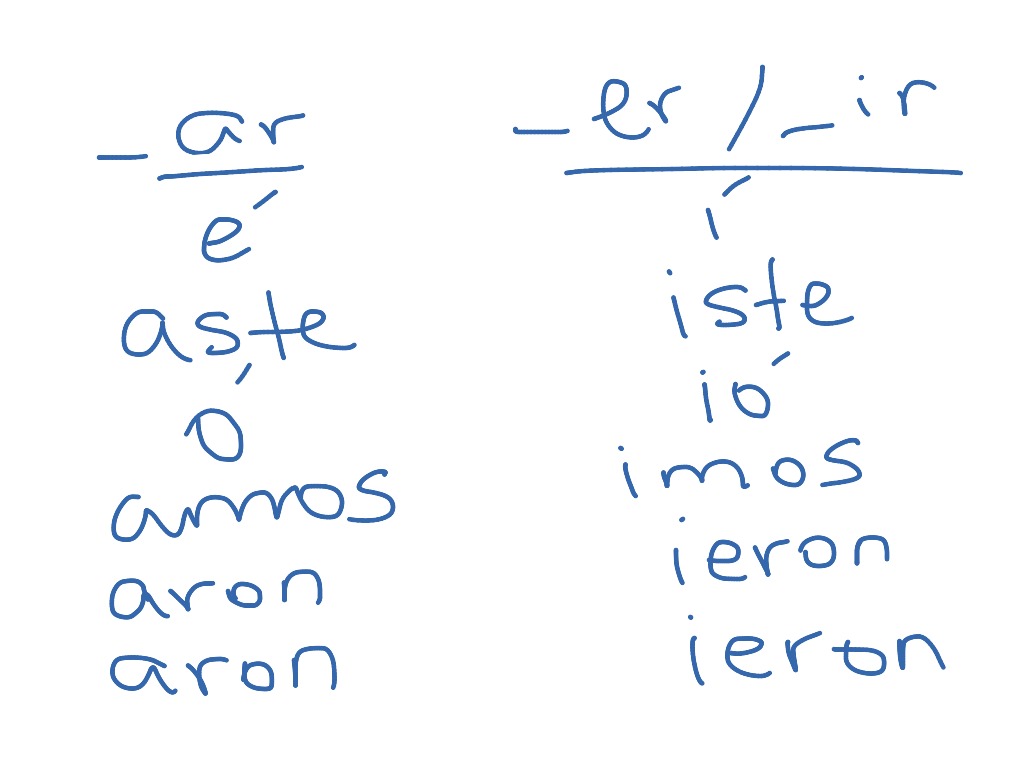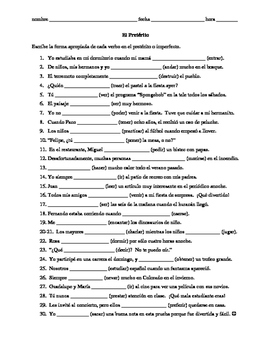


In the right column, the endings for each person: Verb I n the middle column, we see the irregular stem we need to use in Preterite. The following table shows the most important verbs of this type. – Also, the endings are different from the regular ones. – Each verb has an irregular stem in Preterite. The rest of very irregular verbs conjugate in the following way: «ser» (to be) and «ir» (to go) are identical in Preterite Tense, with a very irregular conjugation:.«dar» adds the endings for verbs in «-er» and «-ir», instead of «-ar».«ver» adds the regular endings, but it has no accent marks at all:.First we have «ver», «dar», «ser» and «ir»: Now let’s study the verbs we are calling very irregular. Have you noticed that in the tables above? 🙂Īnd verbs of the last type we have studied (where a letter «y» appears) have even more accent marks! Also, these verbs have accent marks for all persons except «ellos».Īccent marks on regular and almost-regular verbsĪll regular and almost-regular verbs have accent marks for «yo» and «él».

In other verbs, a vowel «i» becomes «y» in the ending for «él» and «ellos».In other verbs, a vowel «o» becomes «u» for «él» and «ellos».In some verbs, a vowel «e» becomes «i» for the persons «él» and «ellos».The verbs we are calling almost-regular add the same endings as regular verbs.īut they have one of the following irregularities: Notice that the endings for verbs in «-er» and «-ir» are identical. The following table shows the endings we need to add to regular verbs in -ar (example «hablar»), -er (example «beber») and -ir (example «partir»): Regular and almost-regular verbs Regular verbs On the other hand, very irregular verbs.On one hand, regular and almost-regular verbs.In order to learn the conjugations, we will divide verbs into two grupos: Conjugation of verbs in Preterite Tense.


 0 kommentar(er)
0 kommentar(er)
